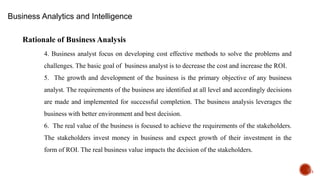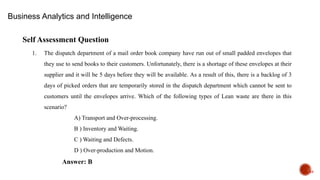The document provides an overview of the origins and development of business analysis. It discusses how business analysis has evolved from early calculation tools and mapping processes to its modern form, which involves identifying business requirements, developing strategies, and implementing solutions to help businesses achieve their objectives. The document outlines the key topics that will be covered, including the rationale for business analysis, business strategy analysis techniques like SWOT, and the responsibilities and competencies of business analysts.




































































